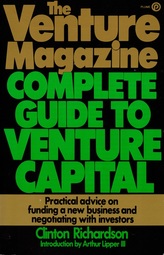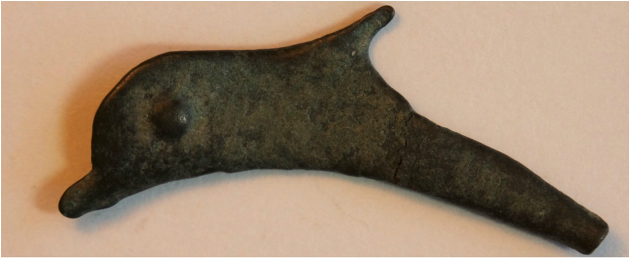|
IS IT BETTER TO USE STOCK OR CASH with an important vendor when your business is cash strapped and in it's development stage? This was the subject of a recent discussion with a local medical device developer whose first blockbuster product was ready for clinical testing and regulatory guidance in obtaining required FDA approval. After seeing the product in development, one of the firms he was vetting to possibly run the nearly $1.0 million testing and application process offered to exchange some of their services for equity in his company. What should he do and how should he think about the process of deciding? Like most enterpreneurs in his position, the founder/CEO was already deeply involved in fundraising. He had to be. There were limits on his personal funds and the business could generate no product sales until it had an approved product to sell. He had investors lined up and committed for a first fundraise to keep his business running through the end of the year and a key inflection point in his product development. He was finding success selling promissory notes that converted into equity in his next substantial round, defined by a minimum amount raised within a given period. The factors we discussed included:
After discussing these and other relevant issues, we turned our attention to the convertible note terms being used successfully by the company and how bring potential investors to a decision point. We also talked about when and how you change the terms of those convertible notes as the company's progress de-risks the investment. We discussed some ideas on both topics that might help better rationalize the fundraising process. In the end we left the discussion open but noted that a structure like the convertible note might be used with the vendor if other criteria were met. Those criteria included removing the debt feature, as some companies do when they use SAFE documents in lieu of convertible notes, and linking both the vesting/grants and the conversion provisions to the timing of services delivery. Fishing for the right answers? Above, an ancient Sarmatian coin from the 6th century BC. Subscribe to Venture Moola through this link. ATLANTA'S VENTURE AND PRIVATE EQUITY COMMUNITIES met last Wednesday in Buckhead to hear Matt Petronzio and Jay Jarrett of Five Points Capital present their views on the current fundraising environment. From their base in Winston Salem, North Carolina, Five Points manages $1.2 billion, investing exclusively in the U. S. lower middle market.
What this translates into are direct control investments, direct mezzanine debt and equity placements and investing in funds that invest in small market buyout and growth strategy funds. They are currently raising $400 million for their mezzanine efforts and their fund of fund efforts. This gives them a fresh perspective on the current fundraising market. The luncheon where they spoke was part of the Southern Capital Forum's regular meeting schedule. The organization, founded in 1984, serves both the venture and the private equity community in the Southeast and hosts the annual Southern Capital Forum each fall that brings fund managers and their limited partner investors together to discuss the business of investing and raising capital. Matt and Jay noted that in 2015 more than 1,000 private equity funds raised $550 billion dollars with 139 funds raising more than $1 billion. In global venture capital during the same period, 341 funds raised $51 billion with 23 of those funds being first time funds. According to their data, more than 9,000 venture financings were closed in 2015 against slightly more than 1,000 exits. They noted a significant overhang ($80 billion in venture capital alone) in unplaced funds, noting that the excess cash was contributing to high deal valuations that were slowing the pace of fund placements. They also commented on the competitive landscape for raising funds, discussed where they saw the growth equity and buyout markets converging, and reflected on the fundraising barbell. The very large and small funds are having more success raising funds than those in the middle. For more about Five Point Capital or the Southern Capital Forum, follow the links provided. To revisit our thoughts about Moby Dick and the influence of 19th century whaling on modern venture capital follow the preceding link.  I AM CULTURALLY IMPAIRED. DEFICIENT BECAUSE OF WHERE I LIVE, where I engage in business and practiced law. I know this for a fact. It was told to me in no uncertain terms by someone who should know. I learned this important fact in 1987, while trying to find a publisher for my first book. I had a stack of rejection letters. It really does not hurt to receive one. Twenty five, maybe, but not one. But one publisher, one of the biggest business book publishers on the planet, did not send the letter saying no thank you. Instead, they reviewed the book and thought. Month after month they thought. Never accepting. Never rejecting. Over time, a relationship developed with the editor assigned to take my regular status calls. She was patient. She was kind. And, eventually, she delivered the news. After more than a year of serious consideration they would not take the book. She could not tell me why. Company policy. But she faltered. Took pity and told me. They liked the subject and the content a lot. It was fresh. It was unique. But it was about venture capital and they just could not take the risk because "no one will believe that anyone from the South knows anything about venture capital." There you have it. My fatal flaw. I live in the South. Time to give up. (There are no businesses in the South, no investors and I could not possibly have traveled to Boston, Silicon Valley, Texas or Europe to close venture fundings for client companies.) But wait. Novel ideas like new companies are not easy to launch. They can be painful to get off the ground. And there are other publishers and magazines and . . . . Then, four days later (I kid you not) it happened. The editor-in-chief of a leading magazine for entrepreneurial companies called. He had seen the manuscript. He wanted it and would find a publisher. Just one condition he said. The magazine name had to be in the title. I said give me a day to find a publisher and he laughed. I timed it. When I called, the No One Will Believe publishing company took less than 5 minutes to accept the book and agree to publish it. It's first printing sold out quickly, making the author, the magazine and the publisher happy. And that is how The Venture Magazine Complete Guide to Venture Capital, just the second book ever published in a category now filled with titles, came to be. So, what did I learn? Maybe I inherited a little persistence from my dad. I like to think so. He grew businesses. And it was not work for sissies. He always said, half jokingly, that he would rather be lucky than smart. But maybe Gary Player had it right when he said "the harder I work the luckier I get." And, what have I learned since? Something that thousands of successful southern businesses have proven over the last 30 years. Southern entrepreneurs create great and sustainable businesses, venture backed or not. ONE OF THE MORE CHALLENGING THINGS a new entrepreneur must deal with is fundraising. It is a time consuming distraction from business operations that is made more difficult by the challenge of setting a realistic company valuation and the expense of complex funding documents.
This reality has led many to try and use convertible notes instead of stock in their early funding rounds. But using convertible note to raise funds presents its own challenges as I was recently reminded by two separate entrepreneurs at Georgia Tech. First, there is the question of whether you use a convertible note or a SAFE (simple agreement for future equity) document of the sort developed at the Y combinator. The advantage of a SAFE document, when investors will use it, is that it gets rid of the fiction that the seed stage company using it will be in a position to repay the money if it does not raise needed funds in a next financing. Instead, if a fundraising does not occur, the holder of the instrument converts to equity at a predetermined formula. Whether it is a SAFE document or a convertible note, several questions remain about how it should be structured. A partial list would include:
Photo of the 'post office' on the Galapagos Islands. Copyright 2008 by Clinton Richardson. |
the blog
Travel, history, and business with original photos.
your hostClinton Richardson - author, photographer, business advisor, traveler. Categories
All
Archives
July 2023
Follow us on Facebook
|
Check out Ancient Selfies a 2017 International Book Awards Finalist in History and 2018 eLit Awards Gold Medal Winner and
Passports in his Underpants - A Planet Friendly Photo Safari a 2020 Readers' Favorite Winner in Nonfiction
Site Copyright 2024 by Clinton Richardson


 RSS Feed
RSS Feed